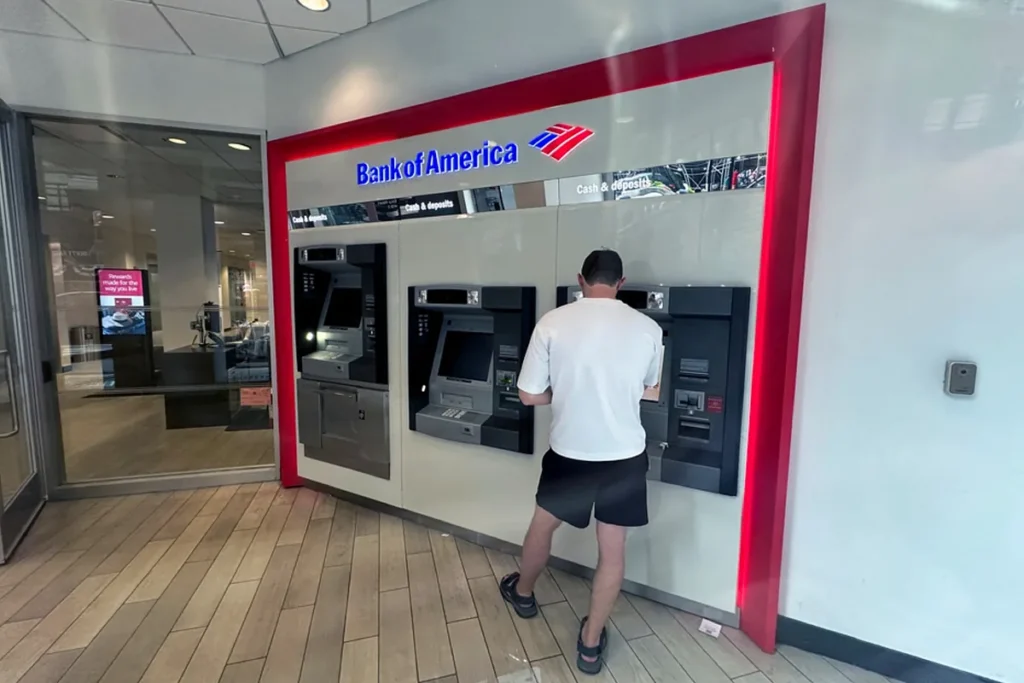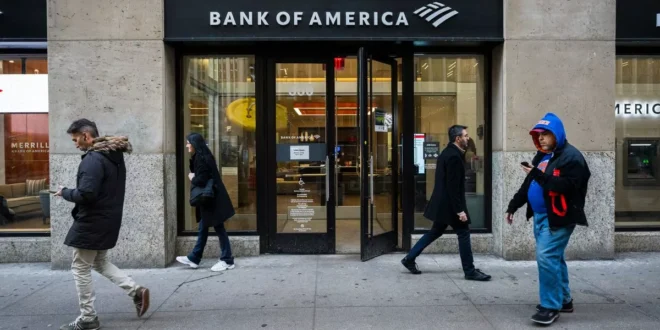In recent years, the growing version of Bank of America accounting has revealed the involvement of some of the country’s largest financial institutions, namely, the trends in issues that are focused on American banks. Customers report that their accounts unexpectedly closed without prior warning, and therefore cannot access funds for a long period. This practice sparked widespread controversy and raised many questions about the fairness and transparency of such actions. This topic has become increasingly common in recent months, expressing concerns to customers, consumer protection representatives, and supervisory authorities. But for many, this basic expectation has been shaken by the growing trend of large bank invoice closures. The US Bank, one of the largest financial institutions in the United States, was involved in a considerable number of such cases. This is about a widespread discussion of the legal implications of loss of customer rights, banking guidelines, and access to funds.
Why is my account closed? Understanding US Bank guidelines.
Accounts with risk management practices:
One of the main reasons for the closure of Comtos at Bank of America and other major banks is based on risk management practices. Financial institutions have long used algorithms and automation systems to monitor account activity for potential signs of fraud, money laundering, or other suspicious behavior. While this is intended to protect the bank and its customers, some people claim that the system is too strict, leading to unintended closures of accounts for those who have not done anything wrong. This behavior may be completely legal. The system can describe it as suspicious due to a large down payment or transfer of funds for business investments by the family. Banks can freeze their accounts or close them immediately without informing customers of the reason for the action.
Violation of Bank Guidelines or Terms of Use:
Another reason your account is closed is that your customer has violated the Bank Guidelines or Terms of Use. Customers may agree to the terms when opening an account, but these guidelines are complicated and subject to change. Common violations include gambling, attempting to carry out illegal financial transactions, or the use of your account for business purposes without proper approval. Even if these violations are unintentionally present, the bank can still end up closing the account. This includes actions such as depositing reviews using inappropriate means, implementing excessive feedback on credit cards, and carrying out risky activities without proper disclosure. These measures are usually set up in account agreements, but many customers may not be aware that they are opposed to their accounts.
Government Printing and Compliance:
Banks are under considerable pressure from regulatory authorities, including the Currency (OCC) offices, to comply with regulations on Financial Crime Enforcement Network (FinCEN) and Currency (AML) and to comply with Know Your Customer (KYC). If customer account activities in these regions raise a red flag, the bank may be forced to close the account to avoid punishment or review by the supervisory authority. Even if the account owner is innocent, these regulatory requirements can lead to unrecognized, non-compliant accounts.
Banks such as Bank of America have internal classifications of “high-risk” customers, including their association with businesses involved in bankruptcy, criminal activity, or illegal activities. For example, individuals or businesses with bad credit stories, or those reported due to past misconduct, could be exposed to accountability closures. In such cases, Bank of America can prevent accounts, particularly if it believes its customers may cause future financial losses, to mitigate potential risks.
Legal and Financial Complications:
In some cases, customers who close their accounts may be exposed to legal and financial complications. For example, individuals may not be able to pay their bills or liabilities due to limited access to funds. This could result in losses in the score of your loan, increased fees from creditors, and potential complaints. Additionally, customers may need to control complex legal and management processes to resolve issues that can take weeks or months. This long uncertainty often leads to further financial difficulties for those affected.
Many customers who have closed accounts with banks share stories online and news reports about the challenges they faced to regain access to their accounts. Some reports have not given explanations for the closure and simply announced that accounts for suspicious activity are “notable.” Others say the process of solving the problem was slow and useless. Customer service employees provided little information or support.
The common topic of these stories is the sense of the customers affected. Many people mostly have requests and instructions when closures take place without warning. In some cases, customers were often forced to rely on social media and other public platforms to attract the attention of the bank, with a variety of consequences.
You can also read this: Stock Market: “Trump imposed his sweeping tariffs plan at midnight US time. “
The Role of Social Media and Consumer Advocacy:
Social Media Platforms and Consumer Representative Groups have played an important role in the submission of these topics. In recent years, many affected customers have contacted Twitter, Facebook, and online forums to share their experiences with Bank of America. These platforms provide individuals with space to express their frustration, search for advice, and contact others with similar issues. They pushed for reforms that demanded greater transparency in financial institutions and provided a clearer explanation and a defined process for banks to close their accounts.
Although banks generally have laws, B. Under certain conditions, such as in these circumstances, a breach of services or regulatory requirements to enter into accounts continues to be entitled. In some cases, account losses can be considered illegal if the bank fails to follow the appropriate procedures or if the customer can prove that the closure is not justified. Legal measures can also be taken if the bank’s actions are discriminatory or unfair. In such cases, the customer may choose to apply for a legal representative to file a claim for damages, accounts, or other types of compensation.

Supervisory Authorities and Accountability:
Supervisory authorities, including the Consumer Financial Protection Bureau (CFPB) and the Federal Reserve, monitor financial institutions and ensure that they act by the law. Banks such as Bank of America are subject to investigations, fines, or other penalties if they engage in unfair accounting practices or fail to meet official requirements.
One of the most important steps Bank of America and other financial institutions can take to resolve accounting issues is to improve transparency and communication with customers. Banks should provide customer accounts with a clear and timely explanation of all measures, including closures. Customers should also receive a clear process for making attractive decisions and a solution if their account is closed.
Strengthening Customer Support Systems:
Banks need to invest in a stronger customer support system to support those affected by accounting. This includes dedicated representatives who will help us investigate the statements of our accounts and provide alternative solutions for those who are temporarily trapped from resources. Better training for customer service staff will also help customers be fair and respectful during the resolution process.
Regulatory reforms may be necessary to ensure that clients’ rights are protected when dealing with accounting. This could include laws in which banks need to gain more knowledge and receive more robust consumer protection in the event of unfair accounting before accounts are closed. These measures help financial institutions take responsibility for their actions and help customers have the opportunity to question unfair decisions.
There are good reasons why banks close their accounts under certain circumstances, but the lack of transparency, communication, and customer support leaves a lot to be desired in these situations. The changes in the way banks manage their accounts and how they interact with their customers are clear. With increased transparency, improved customer care, and improved compliance with consumer protection regulations, banks can begin to recover their customers and ensure that account closures do not unnecessarily hinder financial stability. Additionally, customers must continue to work for their rights and continue to search for resources to navigate the complexities of dealing with unexpected account failures.
The impact of accounting on customers:
Immediate loss of access to the fund. For many customers, this means that wages, savings, and even emergency funds are trapped and unavailable. This can be particularly devastating for those who rely on their paychecks and those who rely on their bank accounts for important financial transactions such as paying rent, purchasing food, and covering medical expenses. Inaccessibility to funds can lead to missed payments, punishment, and a series of financial difficulties. Stress and uncertainty in affected individuals who are excluded from reports can also cause considerable emotional stress. For many people, their bank accounts are more than where they can keep their money. It is an important part of your daily life and your financial security. If your account is closed unexpectedly, customers may not be sure about the reason for the closure and the reduced access to the measures. This sense of uncertainty can lead to frustration, fear, and a lack of trust in financial institutions.
The role of supervisors in ensuring fair banking operations:
Under the complex circumstances of modern banking, financial institutions such as banks are responsible for ensuring the benefits of their clients and maintaining the integrity of their financial system. With unexpected accounting and other unfair banking practices continuing to arise, it is becoming increasingly clear that robust supervision is essential to ensure that customers are treated fairly. The CFPB was established in the financial sector to protect consumers from unfair, misleading, or abusive practices, particularly due to the struggle of symptoms related to bank accounts, inadequate customer support, and other issues related to imbalance effects.;)
This means that both the supervisory authority and the banking industry must remain agile and overcome new challenges, regardless of technological advancements, consumer changes, or legal environmental developments. At the same time, supervisory authorities need to further improve their surveillance mechanisms to ensure that consumers are protected from harmful practices and that financial institutions act ethically and under the law. In particular, CFPB provides a platform to file complaints with consumers and ensure financial institutions are prompt and liable. Financial institutions also ensure that they meet consumer protection, promote competition, and systematically reduce risk. This includes oversight of fair lending practices, transparency in financial products, and ensuring that banks know their customers (KYC).
If a bank like Bank of America uses unfair accounting or other unfair practices, it could be subject to strict investigations, punishments, or fines enforced by these supervisors. This includes the introduction of “Financial Penalties”. This serves as a deterrent and as a way to compensate the affected consumers. If systematic issues are identified, regulators may need to implement corrective actions by the bank or modify certain internal guidelines to prevent further damage. The aim is to ensure that such financial institutions are proactive in a way that respects consumer rights, promotes fairness, and maintains a defined legal framework. When banking becomes more digital and complicated, you need to ensure that financial institutions comply with regulations on various platforms and services that require continuous adjustment.




